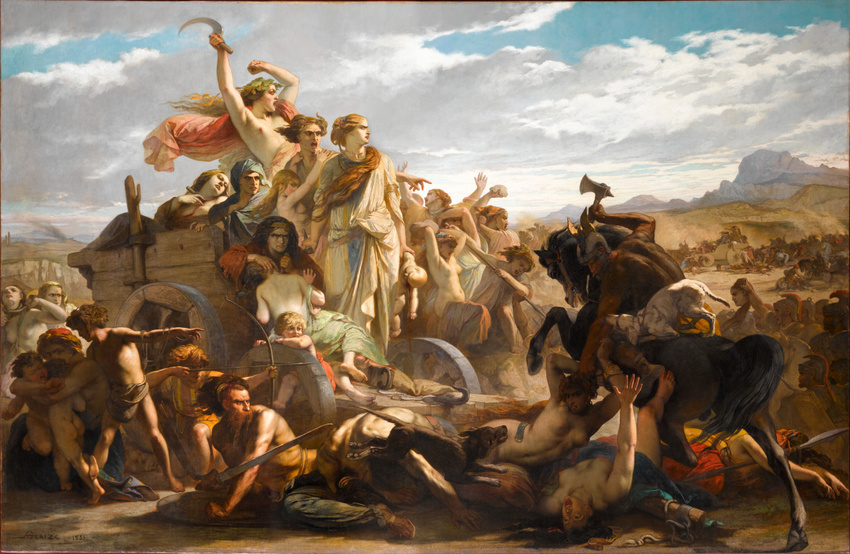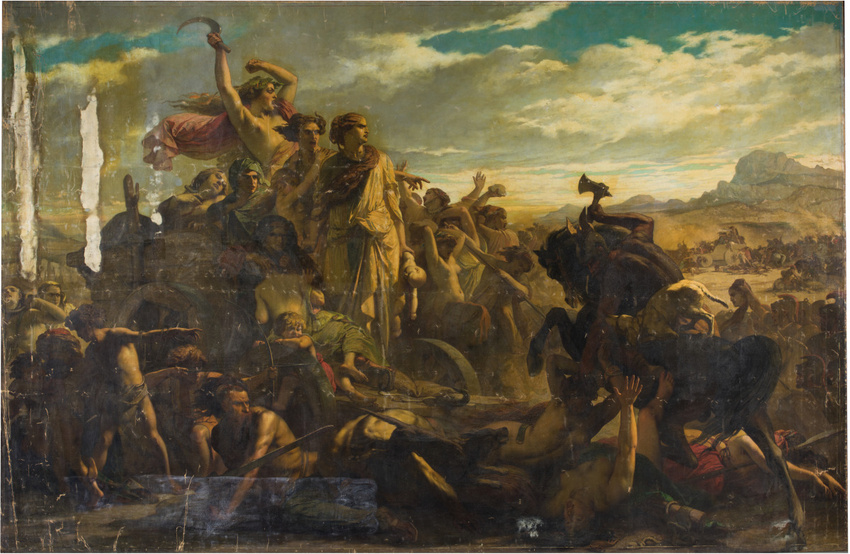Les Femmes gauloises : épisode de l'invasion romaine
This spectacular painting (over six metres long) illustrates the siege of Gergovia, a famous battle in which Julius Caesar established his dominance over the territory that is now France in the first century BC. Mountain ridges can be made out in the distance, a reference to the Auvergne region where the episode took place.
This work is in the traditional Academic style. The theatrical postures and muscular bodies, as well as the monumental size of the painting and the concern for readability, remind us of Jacques-Louis David’s famous Sabine Women (Musée du Louvre, 1794).
According to Caesar’s own account, the women of Gaul harangued and insulted the Romans. Glaize shows them on a chariot in the centre of the composition, towering up like a rampart. An older mother is hiding her daughter in her arms; another is shouting and waving her golden sickle; a third, implacable in her anger and her hatred, has just cut her baby’s throat rather than surrender the child to the victors.
At their feet, the men of Gaul are also putting up a heroic resistance: an injured warrior on the ground is still brandishing his sword, while another is pulling his bow to release an arrow... But on the right, the Romans are advancing, bloodthirsty and pitiless.
In The Women of Gaul, Glaize transformed a defeat into an act of bravery, with a patriotic or even nationalist dimension which would certainly not have gone unnoticed by the new regime in France.
When it was exhibited at the 1852 Salon, Napoleon III had just been proclaimed Emperor. He was fascinated not only by the figure of Caesar (whose history he published in the mid 1860s), but also with the history of the Gauls, who were brought back into the spotlight by the historian Amédée Thierry (Histoire des Gaulois, 1828).
As proof of this interest, Napoleon III instigated excavations in an attempt to locate the site of Alesia and established a museum of national antiquities in Saint-Germain-en-Laye, which would later house artefacts found in archaeological excavations throughout France.
The painting was bought by the State, since this exaltation of France would unite the nation in a shared ideal of pride and courage. And in order to convey its full significance, the painting was sent to Autun - not far from Alise-Sainte-Reine where, it is thought, the Battle of Alesia took place – until it was assigned to the Musée d'Orsay in 1982.



